
Reduce Cost, Improve Quality, and Enhance Productivity with Smart Maintenance
The COVID-19 pandemic has significantly accelerated the need for remote monitoring and diagnostics of operations and assets.


Supply chain planning caters to all those businesses or industries running the economy wheel. Here are the top five sectors banking on supply chain partners:-
Managing your supply chain becomes much simpler when you have the right supply chain solutions incorporated with your logistics.
The solutions are a vital link between manufacturing and product delivery to your customer. A seamless solution will help your company to meet customer requirements efficiently. And so, if you want to optimize your supply chain, here are some of the solutions to consider:
Create resiliency in your supply chain by leveraging Microsoft Dynamics 365 Supply Chain Management to allay parts shortages, labor scarcities, setbacks, or other supply chain problems.
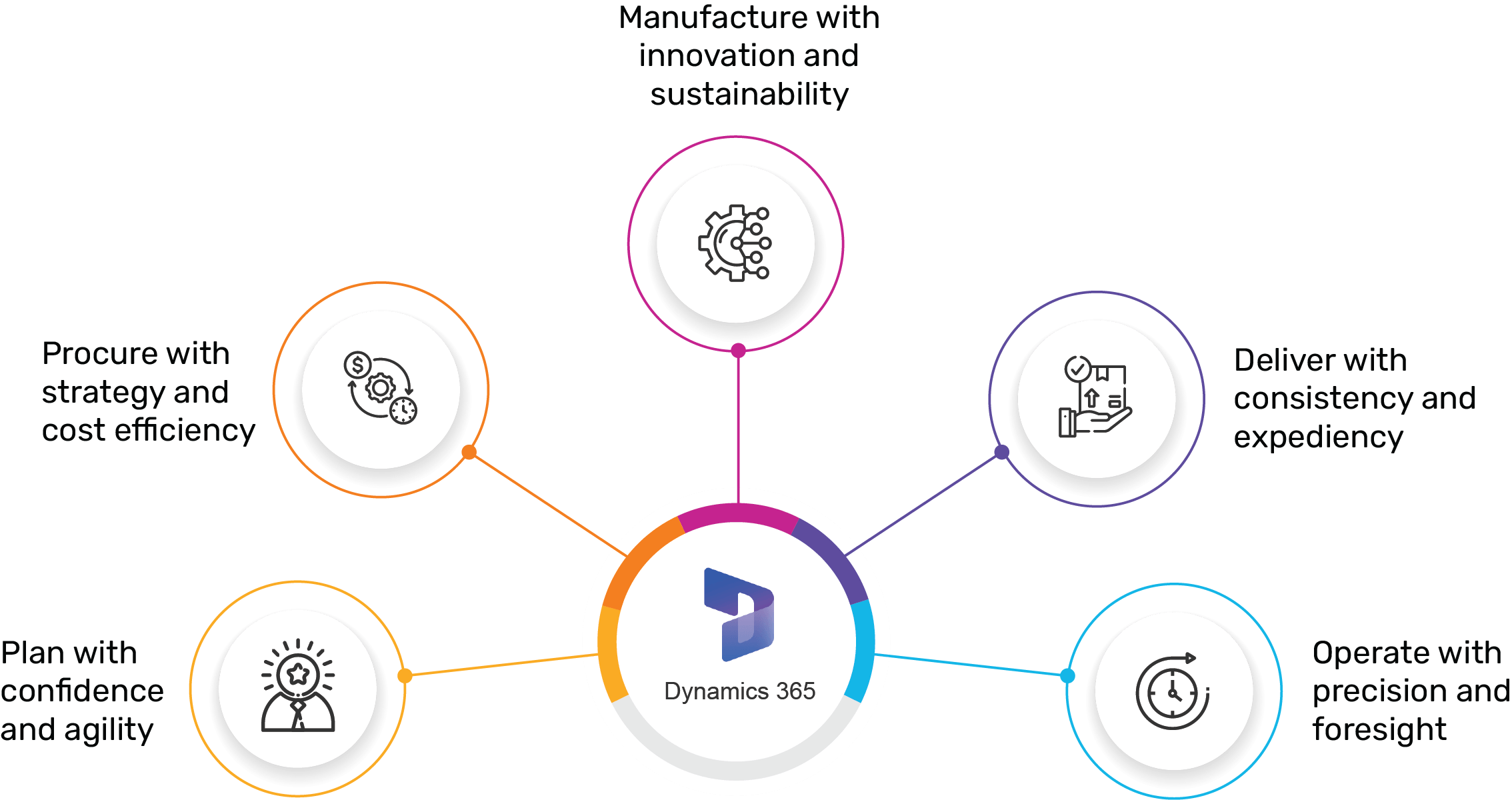
Discover how the planning engine of Dynamics 365 F&O helps in demand forecasting to predict customer demands from sales orders, enhancing demand planning for supply chain efficiency.
Optimize all supply chain planning decisions backed by AI algorithms, create new solutions recommended by the system, and evaluate those via the typical KPIs and customized reports.
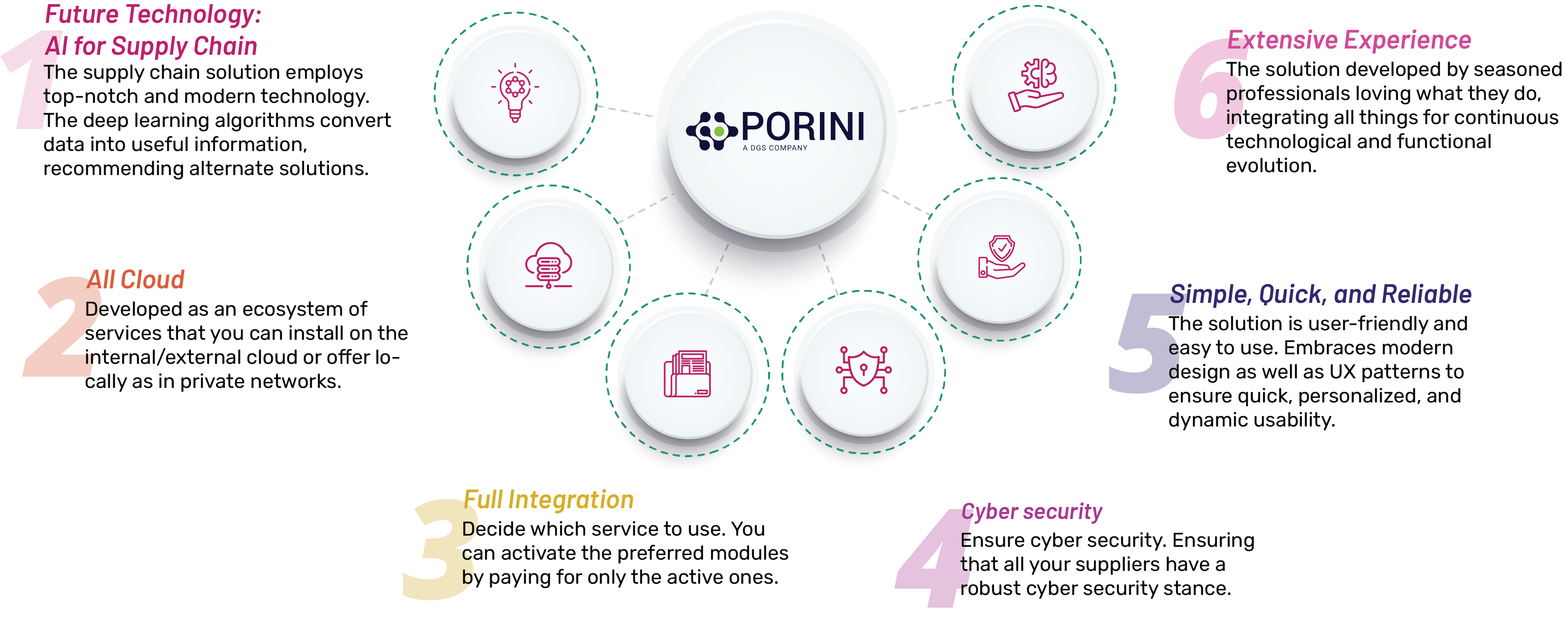
Build strategic decisions across supply, demand, production, merchandising, and operations planning leveraging the RELEX platform.
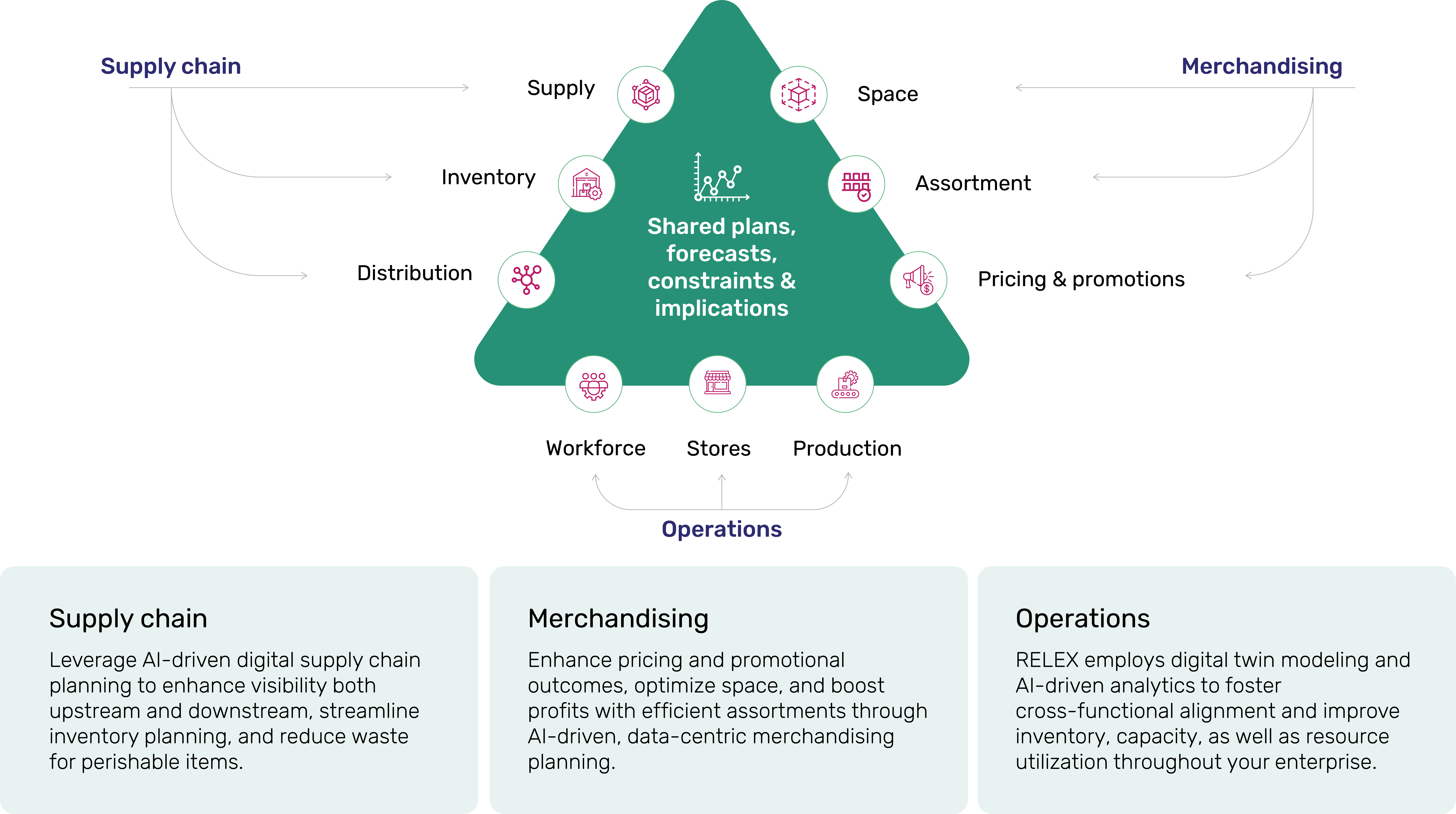
The Logility® Digital Supply Chain Platform empowers you to capture new opportunities, adapt to shifting market factors, and boost profitability in managing intricate universal supply chains.
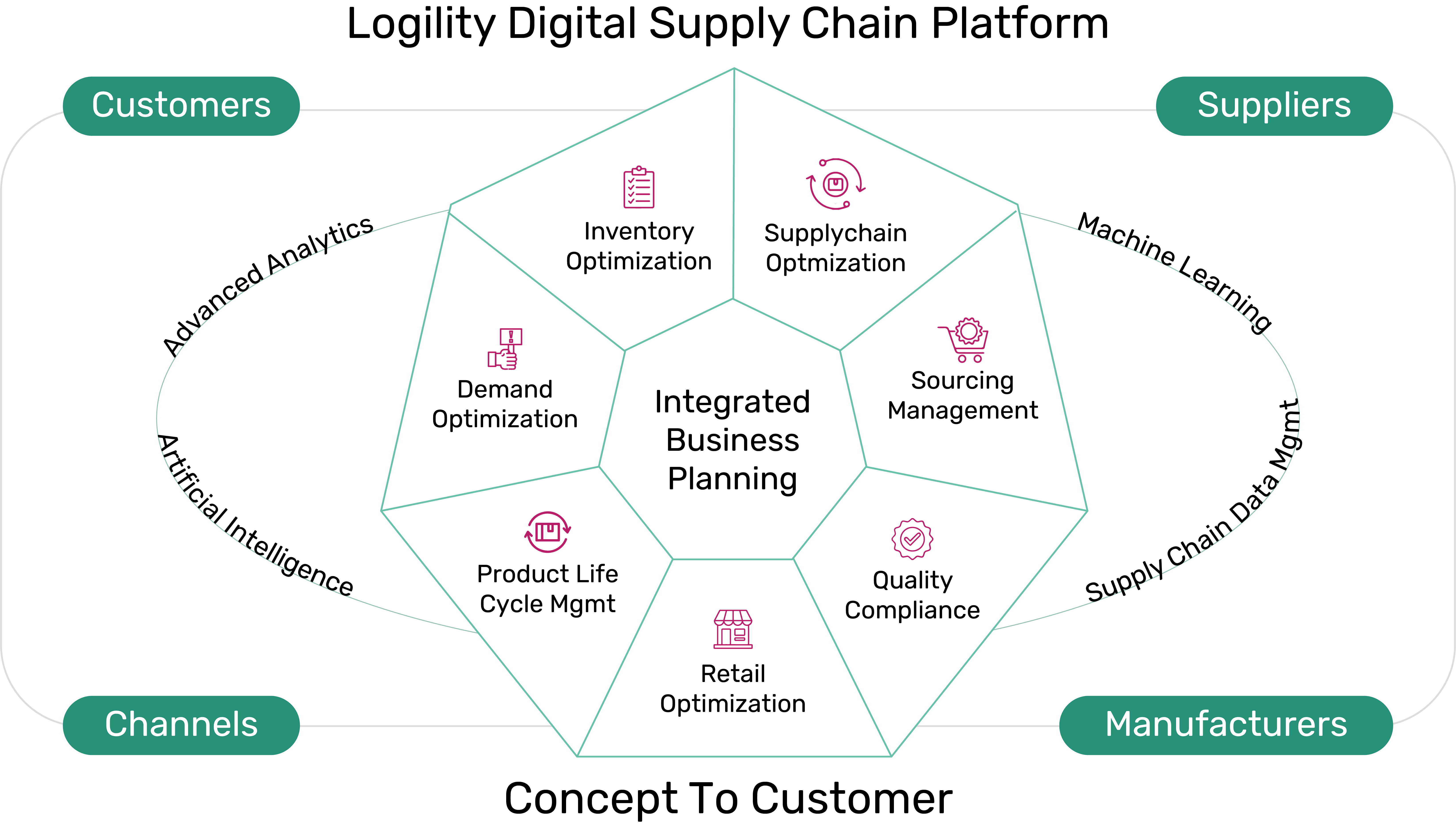
Streamline your complex supply chain leveraging enhanced operational efficiency with o9 supply chain software.
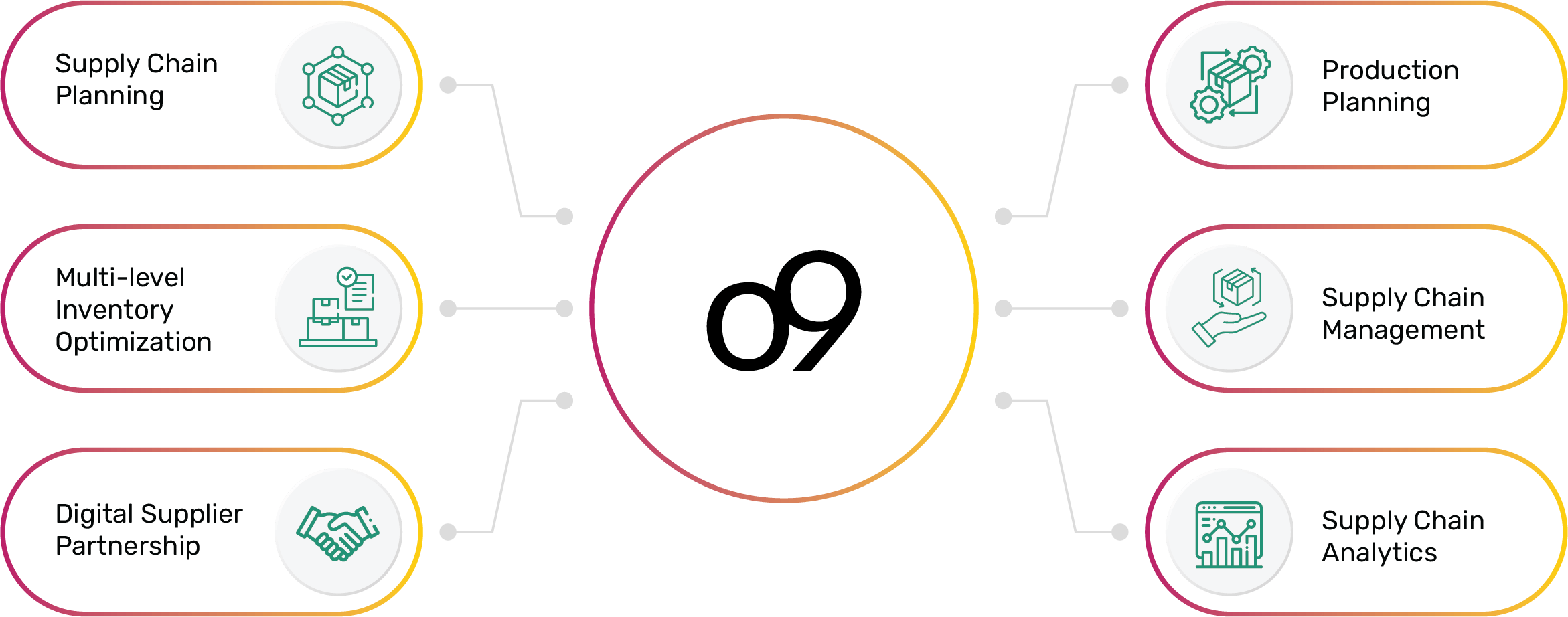
Accelerate performance with end-to-end management of your supply chain in the cloud. Create demand forecasts to manage supplies, automate strategic decision-making by in-built machine-learning capabilities for accurate and consistent predictions, and leverage intelligent recommendations and resolutions to accelerate productivity.
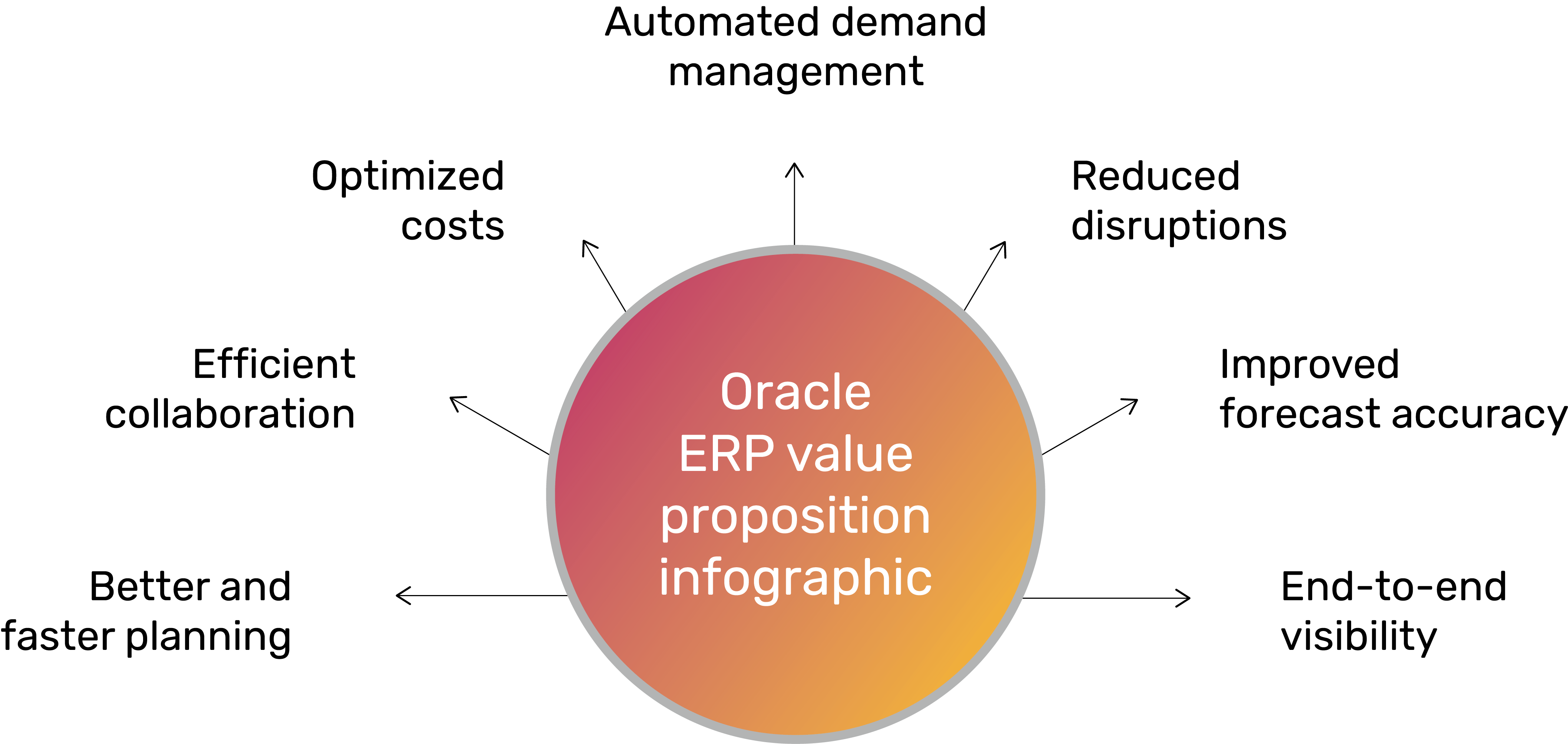
Supply Chain 4.0 is the next step in taking your business efficiency to a new level of efficiency. By leveraging the latest technologies, you will be able to improve the speed of your business opertion, become more flexible, and deliver new heights of efficiency.

Supports the latest inventory tracking and precise accessible data, even if you run an organization with greater volumes and several stock-keeping units (SKUs).
Forecast, quickly evaluate, and more essentially reduce interruptions and hazards to improve supply chain efficiency with our AI-powered abilities.
See every related transaction from one dashboard to fast identify and evaluate problems ensuring effective solutions in no time.
Make available authorized trading associates with an unchangeable and common history of actual, security-ensued digital transactions powered by our SCM solutions.
If you have used any customer engagement tool, you might have heard about “Success by Design”, it’s a consulting methodology. If you want supply chain management and optimization, we’ll consult with you and understand your entire business process and then suggest which solution you should go with.
Our experts play a pivotal role when it comes to customer engagement and focusing on program success. Success by Design is developed around three key principles:
Our consulting approach is about putting knowledge and expertise of working on numerous projects as well as sharing the best practices and expertise to avert issues for ensuring customers can implement an effective supply chain system with certainty and success. Here is how:
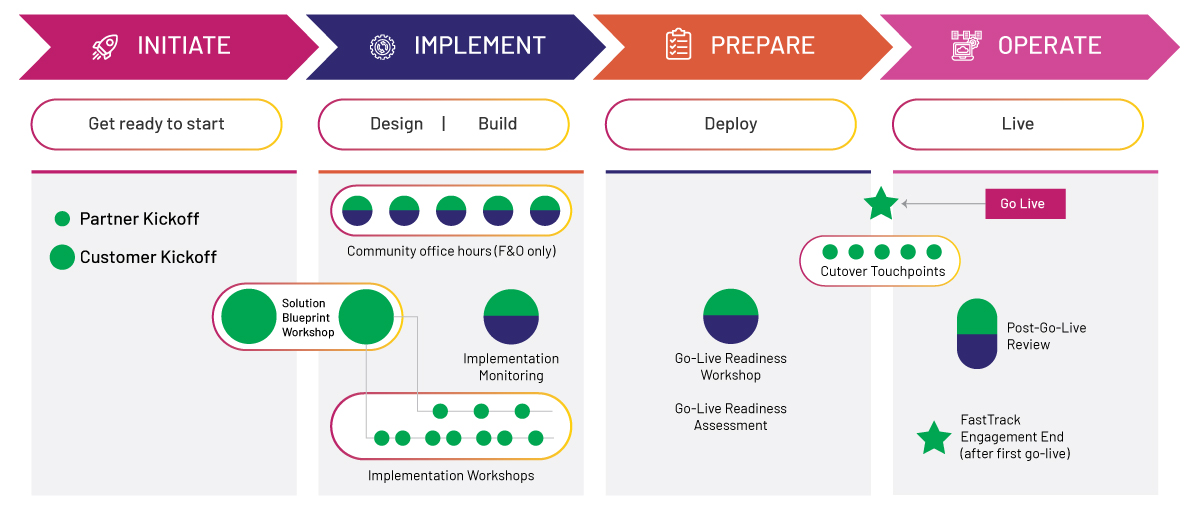
With this SCM solution, you can not only keep track of your orders but also gain a complete view of unit quantities, delivery, pricing, as well as payment data. When orders are placed, monitor picking cycles, quality checks, and figure out the most affordable route for delivery. Also, picture data at the simple click of a button to optimize deliveries to cut back on costs and improve the bottom line. Request a demo or free consultation today.
Supply chain optimization services leverage a variety of advanced technologies and tools to streamline operations, enhance efficiency, and improve overall supply chain performance. These technologies are designed to help businesses make informed decisions, manage inventory, reduce costs, and respond to market demands more effectively. Here are some key technologies and tools commonly used:
Supply chain optimization services play a pivotal role in enhancing visibility and collaboration throughout the supply chain ecosystem. Here’s how supply chain optimization services improve visibility and collaboration:
Data Integration: Supply chain optimization services integrate data from various sources, such as suppliers, manufacturers, distributors, and retailers, into a centralized platform. This consolidation provides real-time visibility into inventory levels, production status, and demand fluctuations.
Demand Sensing: Advanced analytics and machine learning forecast demand more accurately, enabling businesses to adjust production, inventory, and distribution plans in response to changing market dynamics.
Real-Time Tracking: IoT devices and sensors attached to products or assets offer real-time tracking capabilities, allowing stakeholders to monitor the movement, condition, and location of goods throughout the supply chain.
Supplier Portals: Digital platforms facilitate seamless collaboration between suppliers and manufacturers, enabling better order visibility, status updates, and communication.
Collaborative Planning: Tools that support collaborative planning allow partners to share forecasts, production plans, and inventory levels to align efforts and reduce uncertainty.
Centralized Information: Cloud-based platforms provide a centralized repository for all supply chain stakeholders to access relevant information, documents, and data in real-time.
Transparency and Traceability: Blockchain ensures transparency by providing an immutable record of transactions and movements, allowing all parties to verify and trace products’ origins and journeys.
Dashboards and Reports: Visualization tools present complex supply chain data in easily understandable formats, empowering decision-makers to identify bottlenecks, trends, and opportunities at a glance.
Scenario Modeling: Supply chain optimization services use simulation and scenario modeling to assess the impact of various decisions on the supply chain. This collaborative approach helps stakeholders make informed choices.
Risk Mitigation: Collaboration with suppliers helps identify potential risks, allowing proactive risk mitigation strategies to be implemented.
Event Alerts: Automated event alerts and notifications keep all stakeholders informed of critical events, such as delays or disruptions, enabling prompt responses.
Communication Hubs: Unified communication channels ensure that stakeholders can communicate seamlessly through a single platform, reducing miscommunication and delays.
Supply chain optimization services play a pivotal role in optimizing transportation and logistics operations within a supply chain. Here’s how:
Route Optimization: Supply chain optimization employs advanced algorithms and real-time data to determine the most efficient routes for transporting goods. This minimizes travel time, reduces fuel consumption, and lowers transportation costs.
Mode Selection: These supply chain optimization services evaluate the best transportation mode (road, rail, air, sea) based on factors like distance, urgency, and cost. This ensures that goods are moved using the most suitable and cost-effective method.
Load Consolidation: Supply chain optimization analyzes shipping volumes and delivery schedules to consolidate shipments whenever possible. This reduces the number of trips, optimizes space utilization, and decreases carbon footprint.
Carrier Selection: By evaluating carrier performance, pricing, and capabilities, supply chain optimization services help in selecting reliable carriers that align with the supply chain’s needs and goals.
Real-time Tracking: Utilizing IoT devices and tracking technologies, these services provide real-time visibility into the movement of goods. This enables stakeholders to monitor progress and address any issues promptly.
Warehouse Management: Effective supply chain optimization includes warehouse management, ensuring that goods are stored strategically to facilitate efficient loading, unloading, and distribution.
Inventory Management: Optimizing transportation involves aligning transportation schedules with inventory levels, preventing stockouts, and reducing the need for rush shipments.
Risk Mitigation: Supply chain optimization services take into account potential disruptions, such as weather events or traffic delays, and provide contingency plans to minimize disruptions to transportation schedules.
Data Analytics: These supply chain optimization services harness data analytics to identify trends, patterns, and areas for improvement within transportation and logistics operations. This data-driven approach helps refine strategies over time.
Cost Savings: The combination of optimized routes, reduced fuel consumption, better load utilization, and efficient carrier selection leads to significant cost savings in transportation and logistics.
Supply chain optimization services harness the power of data analytics and machine learning to uncover hidden insights and enhance operational efficiency. Here’s how:
Data Collection: Supply chain optimization services gather data from various sources within the supply chain, including production, transportation, inventory, and demand. This data is collected in real time and stored for analysis.
Data Integration: These services integrate data from different systems and departments, creating a holistic view of the entire supply chain. This integrated data provides a comprehensive understanding of operations.
Data Analysis: Advanced data analytics tools are employed to analyze the integrated data. Patterns, trends, and anomalies are identified, helping to uncover inefficiencies and bottlenecks that might otherwise go unnoticed.
Predictive Analytics: Machine learning algorithms are applied to historical data to predict future outcomes. For instance, predicting demand fluctuations, lead times, and potential disruptions enables proactive decision-making.
Identifying Inefficiencies: Data analytics and machine learning highlight areas of the supply chain where processes are not optimized. This could include excessive lead times, excess inventory, frequent stockouts, or inefficient production schedules.
Bottleneck Detection: By analyzing data flow and process timelines, these technologies identify bottlenecks—points in the supply chain where operations slow down, causing delays and inefficiencies.
Root Cause Analysis: Advanced analytics delve into the root causes of inefficiencies and bottlenecks, uncovering the underlying factors contributing to these issues.
Opportunity Identification: Supply chain optimization services identify opportunities for improvement, suggesting changes to processes, routes, inventory management, or supplier relationships that can enhance efficiency and reduce costs.
Scenario Simulation: Machine learning models simulate various scenarios to predict the impact of different decisions. This helps stakeholders make informed choices before implementing changes.
Continuous Learning: As more data is collected over time, machine learning models become more accurate in predicting outcomes and identifying improvement areas, leading to a cycle of continuous improvement.
Prescriptive Analytics: These supply chain optimization services not only identify issues but also provide recommendations for actions that can be taken to rectify inefficiencies, optimize processes, and eliminate bottlenecks.
Real-time Monitoring: By utilizing real-time data feeds, supply chain optimization services provide instant alerts about potential disruptions, enabling proactive response and minimizing the impact of unforeseen events.
Supply chain optimization services are designed to navigate the intricate landscape of global supply chains, effectively tackling the challenges posed by geopolitical risks, customs regulations, and cross-border logistics. Here’s how:
Geopolitical Risk Mitigation: These services analyze geopolitical factors and assess their potential impact on the supply chain. By continuously monitoring global events, such as political instability or trade conflicts, optimization services enable proactive risk management and the swift adjustment of strategies when needed.
Customs Regulations Compliance: Global supply chains involve compliance with a maze of customs regulations. Supply chain optimization services ensure that processes adhere to international trade laws and regulations, reducing the risk of delays, fines, and disruptions due to non-compliance.
Cross-border Logistics Optimization: Supply chain optimization leverages data analytics to design optimized cross-border logistics routes. By considering factors like transportation modes, tariffs, border-crossing times, and warehousing, these services streamline the international movement of goods.
Scenario Planning: Supply chain optimization services use predictive analytics and scenario simulations to anticipate potential disruptions caused by geopolitical events or regulatory changes. They develop contingency plans that allow for quick adjustments in case of unexpected challenges.
Supplier Diversification: To mitigate risks associated with geopolitical instability, supply chain optimization services often suggest diversifying suppliers across different regions. This reduces dependency on a single source and enhances the supply chain’s resilience.
Real-time Tracking and Visibility: Advanced technologies, such as IoT devices and real-time tracking systems, provide visibility into the movement of goods across borders. This transparency ensures better control over the supply chain and timely responses to any deviations.
Data-driven Decision-making: By analyzing historical data and real-time information, supply chain optimization services enable informed decision-making. This helps in adapting to changing geopolitical situations and optimizing logistics routes.
Collaboration and Communication: These services foster collaboration among stakeholders, including suppliers, carriers, customs officials, and regulatory authorities. Effective communication ensures smoother cross-border operations and compliance.
Trade Compliance Management: Supply chain optimization services include tools to manage documentation, certificates, and permits required for international trade. This reduces administrative errors and ensures adherence to customs regulations.
Localized Insights: Supply Chain Optimization services often provide localized insights into customs procedures and trade regulations specific to different regions. This aids in accurate planning and execution of cross-border operations.

The COVID-19 pandemic has significantly accelerated the need for remote monitoring and diagnostics of operations and assets.

The supply chain is considered one of the complex yet vital components of a business. To promote growth, it is imperative to have a robust system that streamlines various processes, including demand, procurement, supply, inventory, transportation, and customer data.

To build more resilient Supply chain, its critical to have real-time insights into supply chain factors like resources, demand, and inventory.
| Cookie | Duration | Description |
|---|---|---|
| cookielawinfo-checkbox-analytics | 11 months | This cookie is set by GDPR Cookie Consent plugin. The cookie is used to store the user consent for the cookies in the category "Analytics". |
| cookielawinfo-checkbox-functional | 11 months | The cookie is set by GDPR cookie consent to record the user consent for the cookies in the category "Functional". |
| cookielawinfo-checkbox-necessary | 11 months | This cookie is set by GDPR Cookie Consent plugin. The cookies is used to store the user consent for the cookies in the category "Necessary". |
| cookielawinfo-checkbox-others | 11 months | This cookie is set by GDPR Cookie Consent plugin. The cookie is used to store the user consent for the cookies in the category "Other. |
| cookielawinfo-checkbox-performance | 11 months | This cookie is set by GDPR Cookie Consent plugin. The cookie is used to store the user consent for the cookies in the category "Performance". |
| viewed_cookie_policy | 11 months | The cookie is set by the GDPR Cookie Consent plugin and is used to store whether or not user has consented to the use of cookies. It does not store any personal data. |